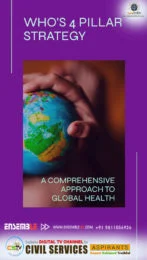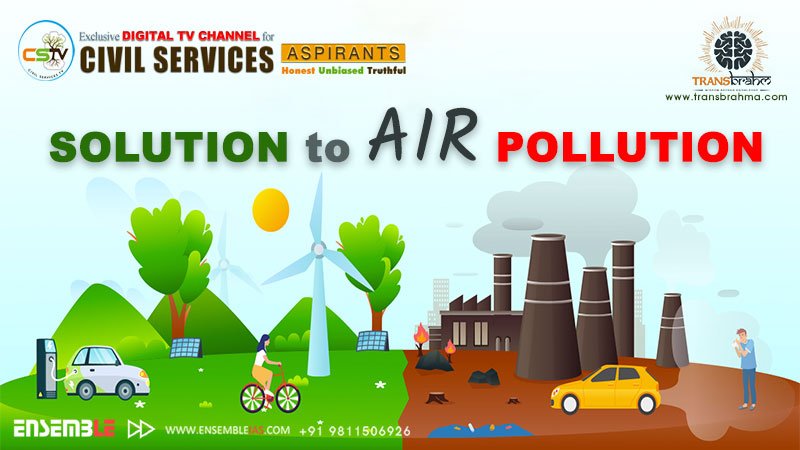Solution to air pollution
Prevention and control of air pollution
How to fight pollution
How to reduce air pollution
Prevention and control of air pollution .

WHO’s 4 Pillar Strategy
Air pollution is indeed recognised as one of the most significant environmental threats to public health globally. Here are some key reasons why air pollution poses a severe risk to public health:
The link to join the course : Online Courses
Respiratory Health Effects:
-
- Air pollution has harmful pollutants like PM, NO2, SO2, and O3. Exposure to these can cause respiratory problems like asthma, bronchitis, and COPD. PM can also cause cardiovascular problems and other health issues.
Cardiovascular Impacts:
-
- Air pollution can cause cardiovascular diseases, including heart attacks and strokes, by damaging blood vessels and causing inflammation and oxidative stress.
Cancer Risk:
-
- Air pollutants like benzene, formaldehyde, and PAHs are cancer-causing. Long-term exposure to industrial emissions and vehicle exhaust raises the risk of developing different cancers, including lung cancer.
Impacts on Children’s Health:
-
- Air pollution can harm children’s developing respiratory and immune systems, causing reduced lung function, respiratory infections, aggravated asthma symptoms, and long-term health problems. Exposure during pregnancy can also increase the risk of premature birth and low birth weight.
Impaired Cognitive Function:
-
- Air pollution can harm brain health and cognitive function. Particles and pollutants can enter the bloodstream and cause inflammation, stress, and disorders.
Environmental Justice:
-
- Air pollution harms vulnerable communities near industrial areas, traffic corridors, or low-income neighbourhoods. This worsens existing health disparities.
Reducing air pollution is essential to protect public health. It requires a multi-faceted approach with efforts to reduce emissions, promote clean energy sources, and implement effective air quality regulations.


- Transition to Clean Energy Sources:
– Shifting from fossil fuels to clean and renewable energy sources is crucial to reduce air pollution.
– Promoting the use of renewable energy, such as solar and wind power, can help decrease reliance on fossil fuels and reduce emissions from power generation.
– Encouraging the adoption of electric vehicles and improving public transportation systems can also contribute to reducing vehicular emissions, a significant source of air pollution.
- Strengthening Industrial Emission Controls:
– Implementing and enforcing stringent regulations and standards for industrial emissions is essential.
– Industries should be required to adopt cleaner technologies, such as using cleaner fuels, installing pollution control devices, and implementing efficient production processes.
– Regular monitoring and inspection of industrial facilities can ensure compliance with emission standards.
- Promoting Sustainable Agriculture and Waste Management:
– Encouraging sustainable agricultural practices, such as precision farming and organic farming, can reduce the use of chemical fertilisers and pesticides, which contribute to air pollution.
– Effective waste management practices, including waste segregation, recycling, and proper disposal of waste, can help mitigate emissions from landfills and burning of waste.
- Improving Transportation Systems:
– Developing efficient public transportation systems, promoting the use of public transport, and encouraging non-motorized modes of transportation, such as cycling and walking, can help reduce vehicle emissions.
– Implementing measures like vehicle emission standards, promoting the use of cleaner fuels, and supporting the transition to electric vehicles can significantly reduce air pollution from the transportation sector.
- Enhancing Indoor Air Quality:
– Indoor air pollution is a significant concern, particularly in households that rely on solid fuels for cooking and heating.
– Promoting the use of cleaner cooking technologies, such as clean cookstoves, and improving household ventilation can help reduce indoor air pollution and its health impacts.
- Raising Awareness and Education:
– Public awareness and education campaigns are essential to inform individuals about the causes and effects of air pollution.
– Encouraging behavioural changes, such as reducing personal vehicle usage, conserving energy, and adopting eco-friendly practices, can contribute to reducing air pollution at the individual level.
- Collaboration and Policy Support:
– Addressing air pollution requires collaboration among governments, policymakers, communities, industries, and international organisations.
– Governments should formulate and enforce comprehensive air quality management policies and regulations.
– International cooperation and agreements can also be crucial in addressing transboundary air pollution issues.
It is important to note that these solutions are not exhaustive, and the specific strategies to reduce air pollution may vary depending on the regional context and sources of pollution. However, by implementing a combination of these measures, it is possible to fight air pollution, improve air quality, and protect public health and the environment.
WHO’s 4 Pillar Strategy
The World Health Organization (WHO) has adopted a comprehensive approach to address the issue of pollution through its “4 Pillar Strategy.” This strategy focuses on tackling the health impacts of pollution and promoting sustainable development. The four pillars of WHO’s strategy concerning pollution are as follows:
- Assessing the Health Impacts:
– This involves conducting comprehensive assessments of the health impacts of pollution. Understanding the sources of pollution, evaluating exposure levels, and quantifying the associated health risks.
– By assessing the health impacts, WHO aims to raise awareness about the magnitude of the problem and provide evidence for policy-making and targeted interventions.
- Strengthening Knowledge and Data:
– This focuses on enhancing knowledge and data on pollution-related health issues.
– Supporting research efforts to improve understanding of the links between pollution and health and collecting and analysing data to monitor pollution levels and associated health outcomes.
– Strengthening knowledge and data helps develop effective policies, interventions, and guidelines to mitigate the health impacts of pollution.
- Establishing Policies and Interventions:
– This involves establishing policies and interventions to prevent and reduce pollution.
– This includes promoting, developing and implementing evidence-based policies, regulations, and guidelines to mitigate pollution.
– WHO works in collaboration with governments, stakeholders, and other organisations to advocate for pollution control measures, promote sustainable practices, and support the implementation of interventions at local, national, and global levels.
- Advocating for Action and Partnerships:
– This focuses on advocating for action against pollution and fostering partnerships.
– WHO plays a crucial role in advocating for policies and actions that prioritise pollution control and promote sustainable development.
– This involves engaging with various stakeholders, including governments, international organisations, civil society, and the private sector, to foster collaborations and collective efforts in addressing pollution and its health impacts.
By adopting the 4 Pillar Strategy, WHO aims to raise awareness about the health consequences of pollution, support evidence-based policies, improve knowledge and data, and foster partnerships to reduce the burden of pollution on human health and well-being.
Best Online Coaching for Civil Service_IAS_ UPSC_IFS_IPS
Free Study Material ENSEMBLE IAS ACADEMY | Call +91 98115 06926 | Visit us:- https://ensembleias.com/ | Online Store: https://online.ensemble.net.in/
#air_pollution #Air_Quality #Solution_to_air_pollution #who #pollution #India #Upsc_current_affairs #news #GSPaper #UPSC #ias #upsc_exam #civilservices #civil_services_study #ensemble_ias_academy #geography_optional #k_siddharthasir #ias #upsc_exam #civilservices #upsc_motivation #upsc_aspirants #trendsingeography





